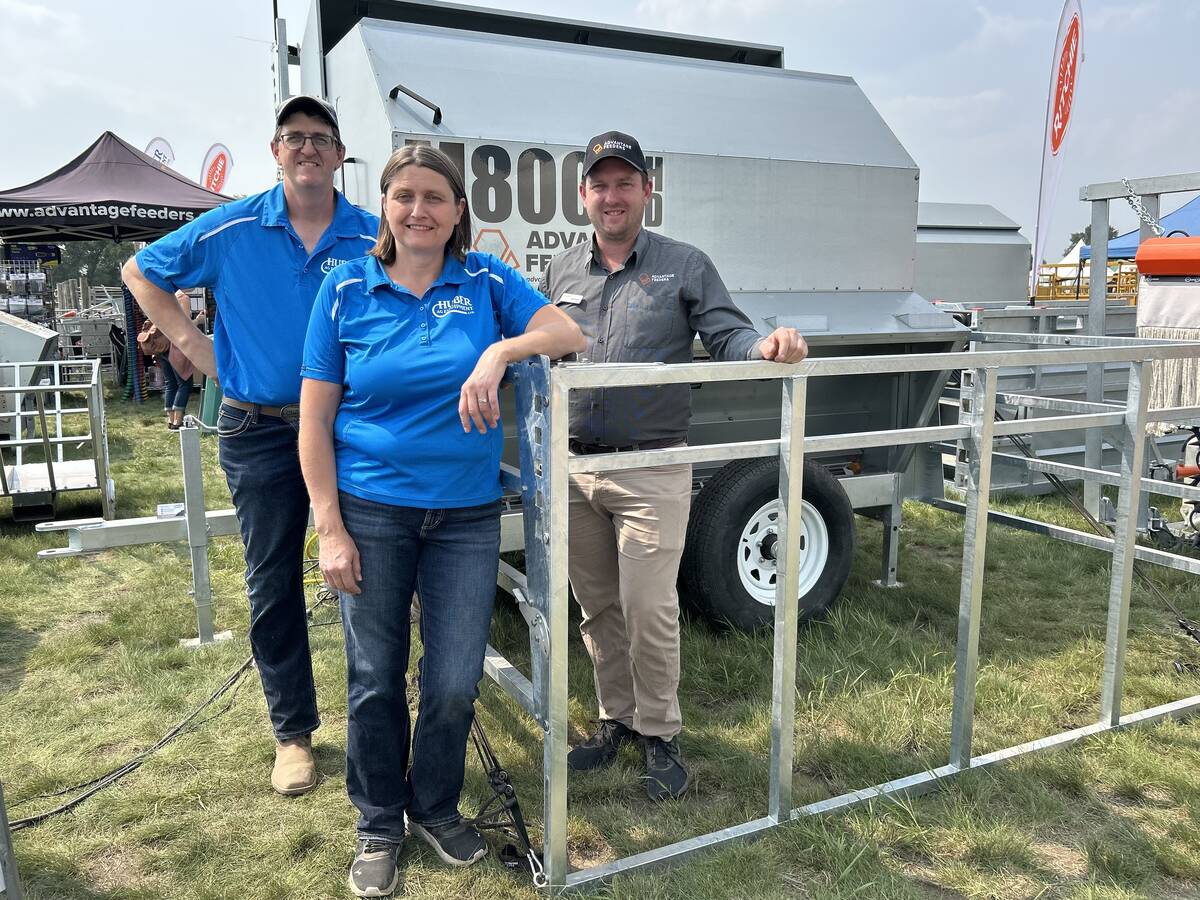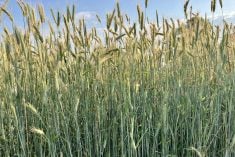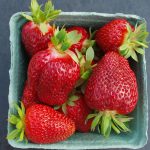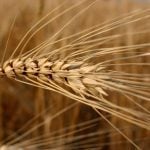From the discovery of how-to-create-nitrogen-in-a-lab to genetic diversity concerns in crops and innovative ways to produce forage, Dr. Ralph Martin covered a lot of ground during his opening keynote address at the 15th annual CFGA Conference in Guelph, Ontario, in December.
Focusing on perennial forages as a key contributor to sustainable agriculture, Dr. Martin started with a brief history lesson around the development of nitrogen fertilizer.
“We’ve only had nitrogen fertilizer for a little over 100 years,” he said noting of all the energy consumers in agriculture — tractors and trucks, fans and barns — the biggest input is fertilizer, which requires high temperatures and pressures to produce.
Fears of food shortages and a growing global population continue to see demands for fertilizer and increased yields. While many people in the world today don’t have enough food, many more suffer because they eat too much.
Read Also

Finding greater value through controlled creep feeding of beef calves
Gerard Roney, founder of Advantage Feeders in Australia, spoke at Ag in Motion 2025 about using controlled creep feeding to develop a calf’s rumen, allowing for better uptake of energy and protein at a younger age, along with other beneficial applications of creep feeding.
Martin’s message is one of balance. Too much food waste means too much fertilizer being used, too much plastic chemicals in the environment and CO2 concentrations are too high. He warned if we continue as we are then humanity will suffer a major population correction. This is where perennial forages and photosynthesis enter the discussion.
Importance of forages
“It’s really important to think about net primary production,” he said. “Net primary production is what plants have available after they’ve done their own respiration. They photosynthesize. They need a little bit of that for themselves and then the rest is available.
“What’s so interesting is that pre-industrial, the net primary production used by humans was about 10 per cent,” Martin told attendees. “Now humans are taking up to 23.5 per cent. We’re using a lot more than our share. When we think about forages, and having forages on the land as much as possible, keep your soil covered.”
This practice will optimize photosynthesis. He said we need to get plants working where they can. That may mean planting in patches and using autonomous small machines which can seed a field in a more optimized manner.
“This could be more efficient than the trajectory of one person on ever-increasingly larger machines,” he said. “Think back to those low-producing areas on farms where it’s not paying to put in inputs anymore because we’re not getting enough out of it. Why not make those little patches into forage refugees, or places where there are grassland refugees, for birds and for other creatures?”
Martin added that it’s important to protect forage land, which is declining at a time when it is needed for diversity and soil protection. He said ways need to be found to incentivize diversity, such as incentives to farmers for short-season varieties of cash crops bookended by forage crops in the early and late seasons.
“I’d like to see us reserve at least three per cent of farm(land) for natural habitat on every farm and the incentive would be higher if you did more than that,” he said.
Intensive and bale grazing
Martin made two points about managing intensive grazing.
“One is the recovery period — the number of days from one grazing event until the other,” he said. “That varies; at the early season, the recovery period can be fairly short. And then there’s a period of stay, the length of time that animals will stay in a paddock.”
The big change is how much residue is left behind. Today it can be more, and it’s considered good. There are many benefits for intensive grazing. Animals are healthy, they exercise more, their meat and milk have more Omega 3 and other beneficial elements.
For dairy farmers concerned about feeding extra grain, Martin said technology is adapting to make it possible. Mobile units, collar transponders and even mobile milking units are making grazing more feasible.
“And adaptive multi-paddock grazing has been known to work with sequestering carbon.”
Martin said the critics will say methane emissions from cattle on pasture are higher than cattle in intensive farms. However, he pointed to research done at the agricultural college in Nova Scotia which shows the emissions are similar.
Complementing intensive grazing is the opportunity he sees with bale grazing which he says offers opportunities to improve areas with low fertility.
“With bale grazing, you can get the manure where you want it… and evenly distributed.”
Soil improvement and innovations
As Martin wrapped up his session, he suggested rewarding farmers with financial incentives for the outcome of good or very good soil organic matter. He said too often farms are mono-cropped and the soil has degraded over years. Rewarding farmers for improving the soil is a win/win.
One way to improve soil is through no-till systems. He pointed to several large farms using roller crimpers, allowing them to sow multiple crops on a field.
He’s also found some examples of unexpected crops grown using the no-till method.
– Susanne Wagner is the OFCAF/AGS course developer for the Canadian Forage & Grassland Association.















